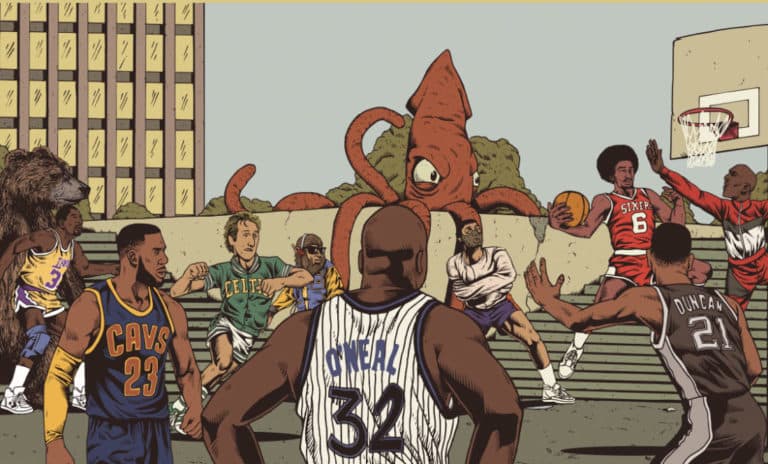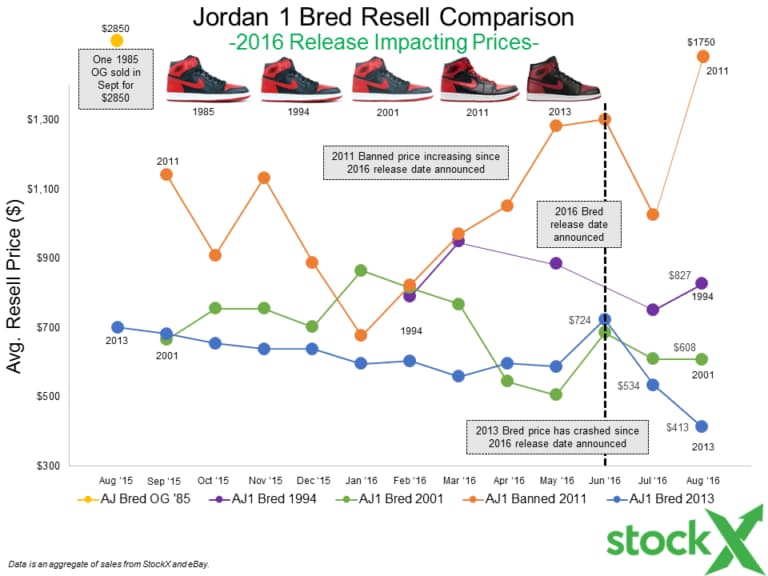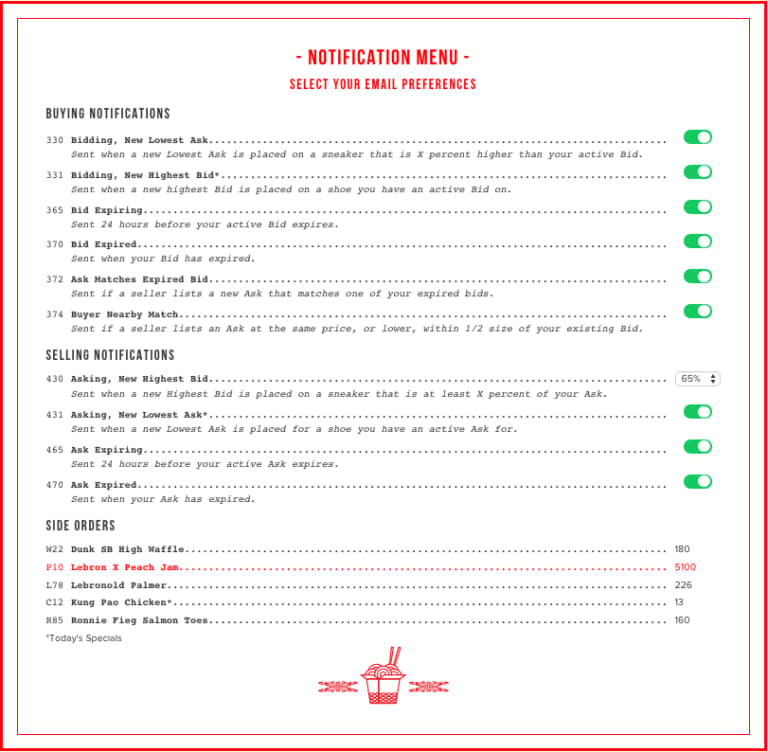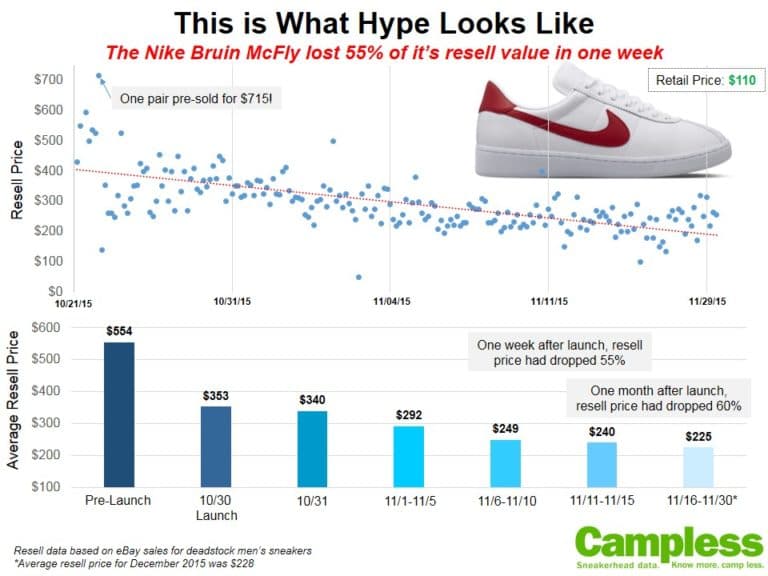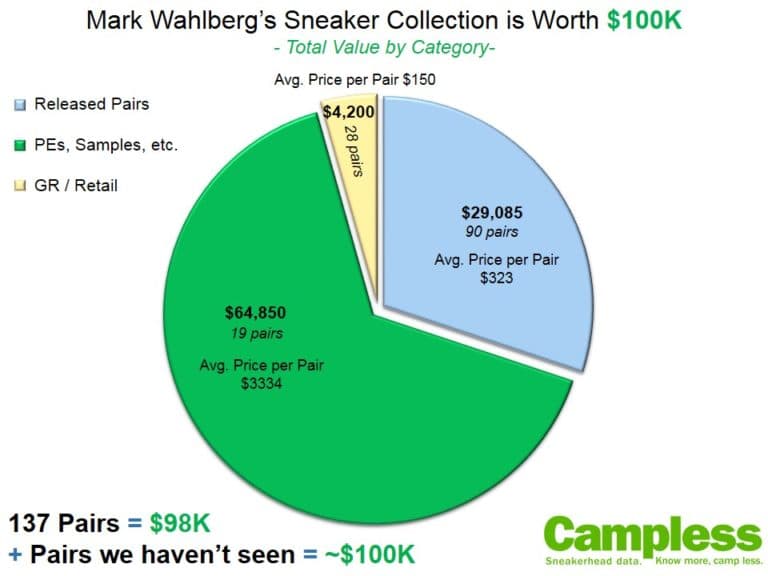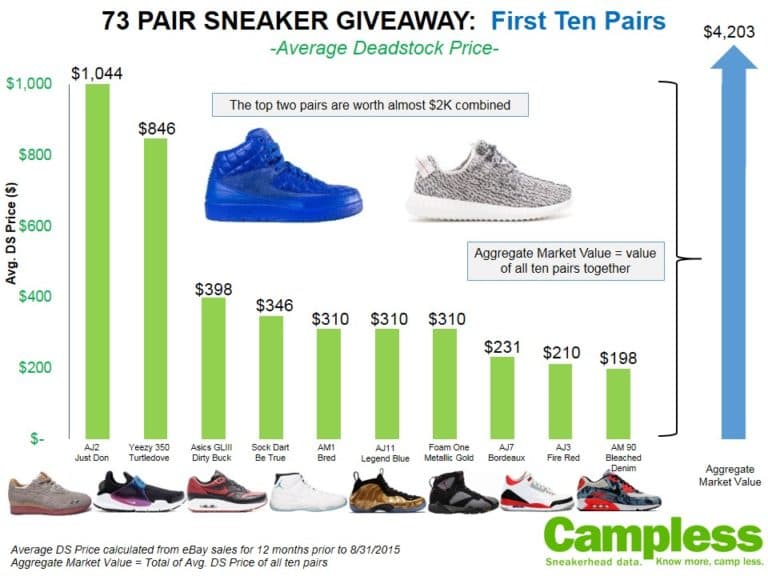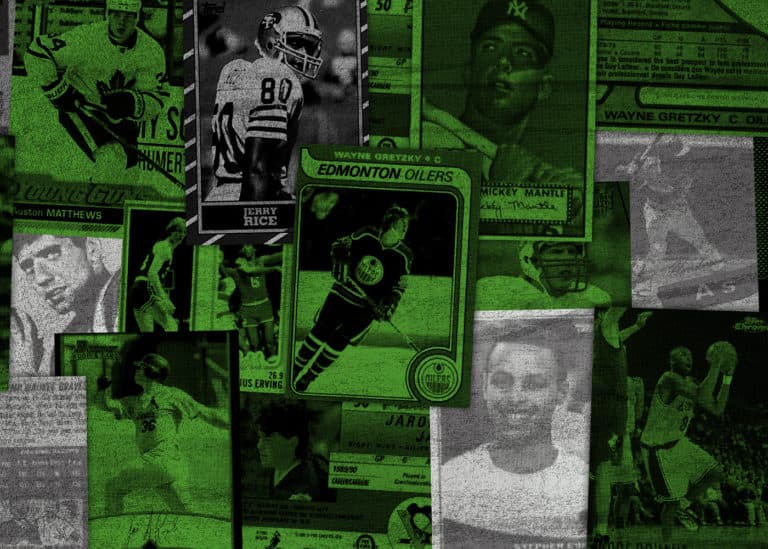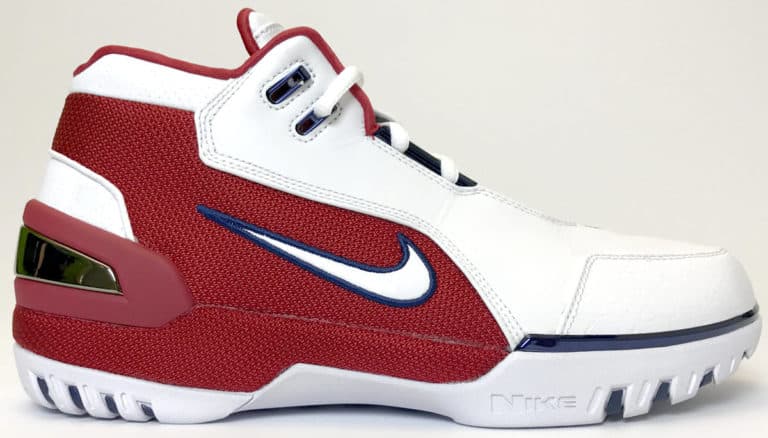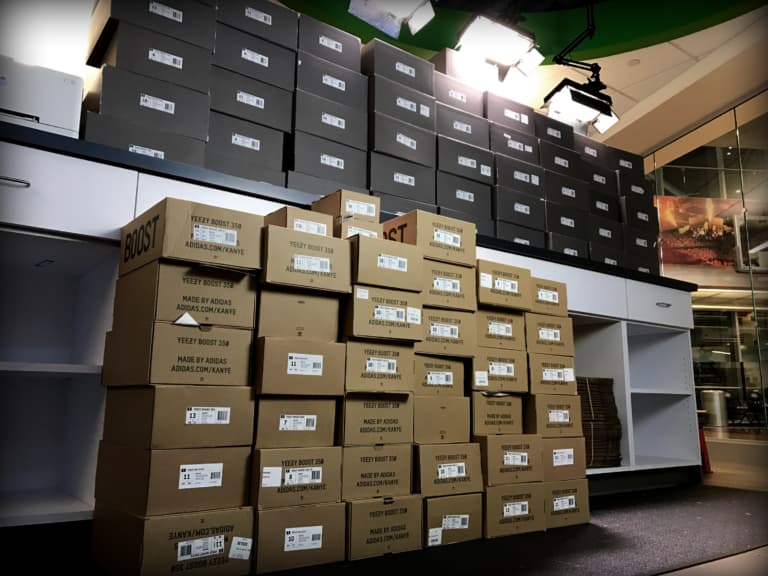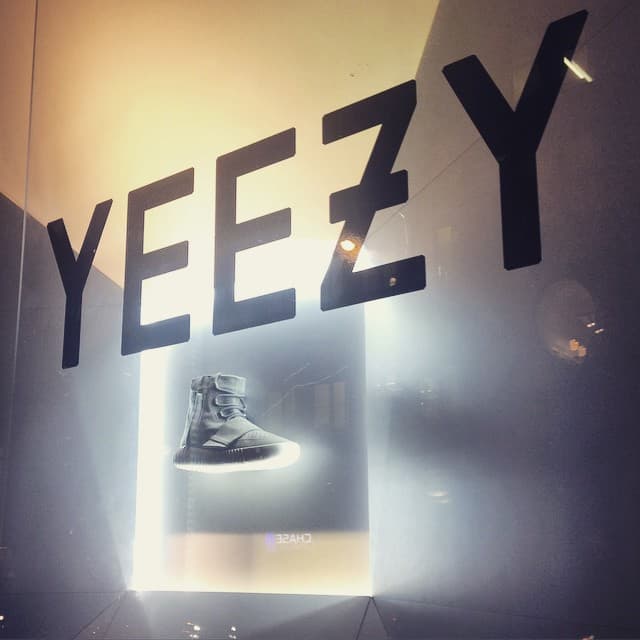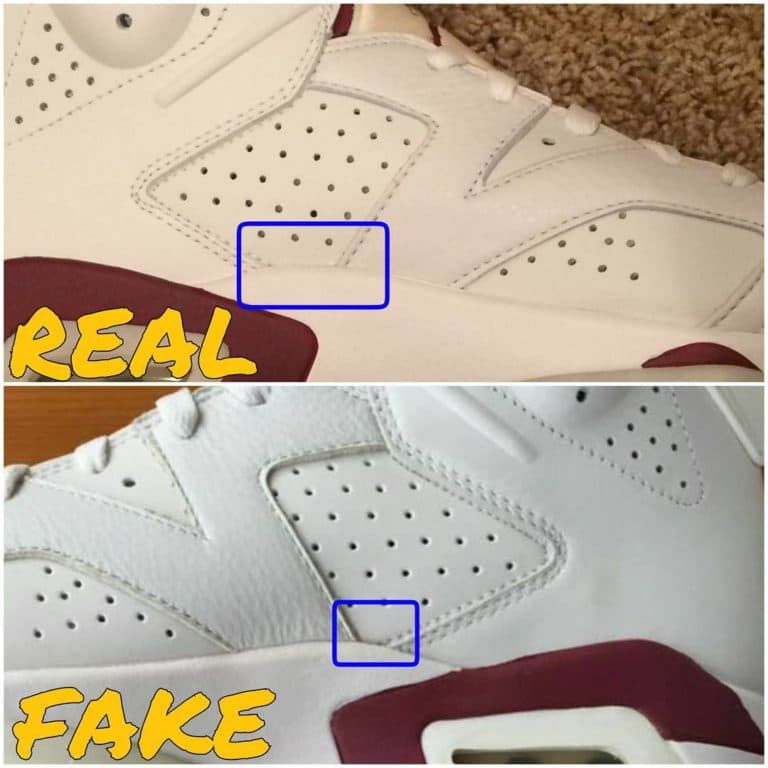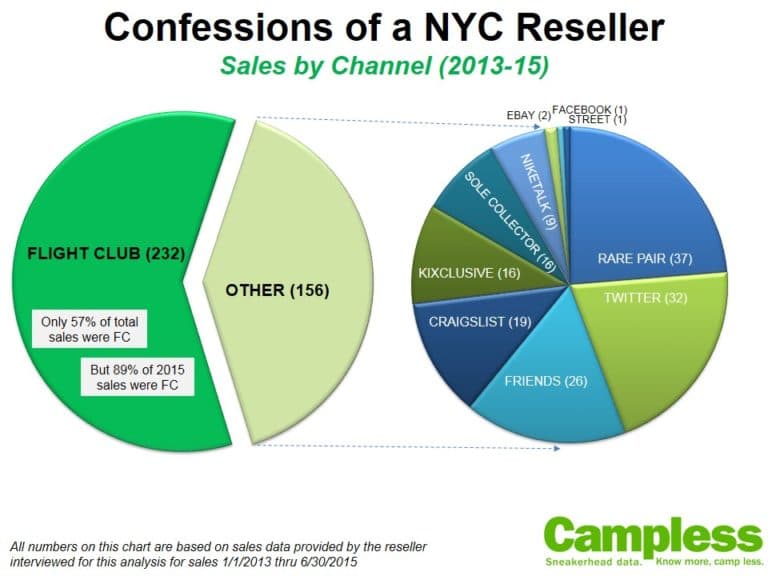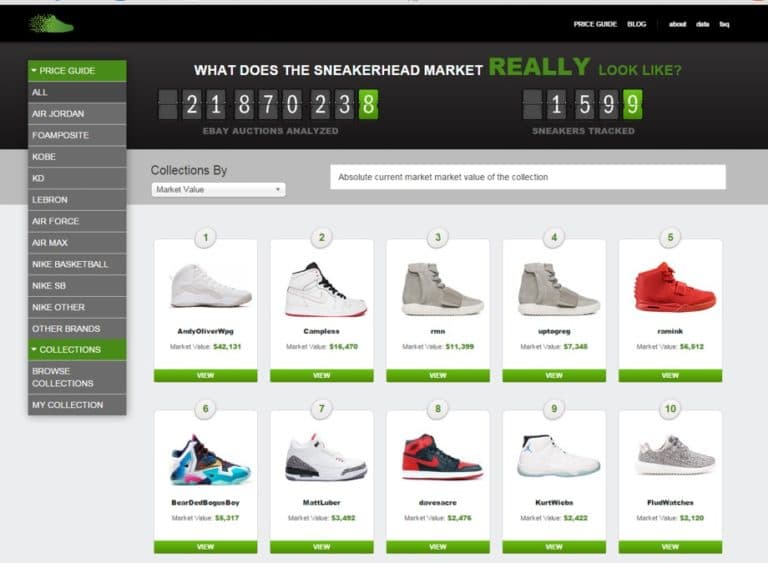StockX is a sneaker stock market . . . but what does that mean?
Actually, StockX is a stock market of things . . .
Usually, we think of a stock market as a place to buy stock – The New York Stock Exchange (NYSE), for example.
But when we say that StockX is a stock market, what we really mean is that StockX functions like a stock market. The NYSE, or any stock market, uses a unique method of connecting buyers and sellers. StockX uses that same method.
StockX, and every stock market, is a ‘live marketplace’, a genuine Bid/Ask market. Buyers place Bids, Sellers place Asks, and a transaction occurs when a Bid and an Ask meet. It is an anonymous, transparent and authentic market which allows both buyers and sellers to transact immediately with 100% confidence across a market price.
There are three foundational elements which allow a Bid/Ask market to function: 1) Anonymity; 2) Transparency; and 3) Authenticity
- Anonymity. If you buy a pair of sneakers on StockX, you will never know who the Seller is. Similarly, if you buy a share of Apple stock from the NYSE, there is an actual Seller on the other end of your trade, but you will never know who he or she is – and you don’t care. All you care about is the price you paid, and that the stock is real.
- Transparency. On the NYSE, you can see every trade for every share of Apple stock that has ever happened (as well as every split, dividend, etc.). On StockX, we use millions of data points to provide real-time and historic market pricing on sneakers. For those who remember Campless, this is the application of that data – data for actual sales, NOT listings. On every other sneaker market – and pretty much every online market for every product on the internet – the best data available is what similar products are listed for. But we all know that just because someone is listing a pair of Adidas Ultra Boost White/White for $10,000 doesn’t mean that anyone is actually paying that.
- Authenticity. Integrity of any market is critical to its existence. In order to ensure integrity of StockX, we authenticate every pair of shoes sold. We confirm that it’s real, deadstock, the right size and the right shoe – and we always err on the side of caution. As a result, Buyers will never be stuck with a fake shoe, and Sellers will never get a chargeback.
Here’s the simple 7-step process:
- If we suspect that the shoe is not authentic, the Buyer is immediately refunded his money and we deal with the Seller accordingly. The Buyer never has to deal with the Seller.
- Every shoe is tagged with a tamper-proof authentication tag, so a Buyer can’t claim he received the wrong shoe. But if a Buyer comes back and claims otherwise, we’ll handle it – not the Seller. The Seller will never receive a chargeback, and never has to deal with the Buyer.
Perhaps even more important than the elimination of fakes and chargebacks is the fact that both Buyer and Seller always have someone to turn to. You know who we are and where we work – we’re not some random user handle who is going to disappear the second an issue arises. We won’t leave our customers to fend for themselves with payment processing companies.
Simplified, StockX is about removing distractions to allow you to focus on what matters.
- Anonymity . . . never worry if the buyer/seller is legit
- Transparency . . . never worry what the shoe is worth
- Authenticity . . . never worry if the shoe is real
With an anonymous, transparent and authentic marketplace, we can use Bids and Asks to negotiate and purchase sneakers.
But how?
Bids & Asks:
Sellers place Asks. Buyers placed Bids. When a Bid and an Ask meet, a sale occurs immediately.
The reason we can instantly execute trades is because our products are standardized. On StockX, as on the NYSE, sneakers are commodities. We only allow the sale of deadstock (new) sneakers with the original box – therefore, pictures and descriptions are not required. This allows the market to move quicker and more efficiently, and it does so using Bids and Asks.
Ask: An Ask is a listing for sale.
Every Ask is visible to every person on StockX – but only the amount, not the seller behind it.
Here we can see 10 Asks – i.e., 10 listings for sale. The lowest is $340, the most expensive is $437, and four pairs are listed at $375.
Any Buyer can buy a sneaker immediately at the lowest Ask price. It looks like this:
This is similar to an eBay “Buy-it-Now”, or a sneaker listed for sale at a consignment shop except that, on StockX, you never have to search for the lowest price. In fact, the only shoe you are even allowed to buy, is the lowest priced Ask.
BID. A Bid is an offer to buy.
Every Bid is visible to every person on StockX – but only the amount, not the Buyer behind it.
Here we can see there are two bids on this shoe, one at $300 and one for $275.
This is NOT similar to eBay or consignment or any other sneaker marketplace or any other e-commerce site in the entire world other than the actual stock market. This is NOT the same thing as a bid on eBay. On eBay, a bid is an offer to buy one specific shoe from one specific seller. On StockX, a Bid is a notification to the entire world that a Buyer is willing to pay a certain price for a pair of sneakers. We know it’s a legit Bid because it’s tied to his PayPal or credit card.
Any Seller can sell immediately at the Bid price. It looks like this:
This may seem subtle, but the StockX “Sell” button is truly revolutionary. This function – selling to a live bid – does NOT exist anywhere except the actual stock market. In every form of commerce, the Buyer has the choice. The Seller sets the price, and the Buyer has the choice of whether to accept (buy) or not. Now, Seller’s finally have a choice, too. Buyers can place a Bid and Sellers have a choice whether to accept (sell) or not. You could be the most prolific sneaker seller in the world, and never list a pair for sale, ever – just go around picking off bids.
Put the two together – Bids and Asks – and this is what you see:
The lowest Ask is $340 – a Seller is willing to sell for $340.
The highest Bid is $300 – a Buyer is willing to buy for $300
And everyone in the world knows the spread on this pair of shoes is only $40.
What will you do with that knowledge?














